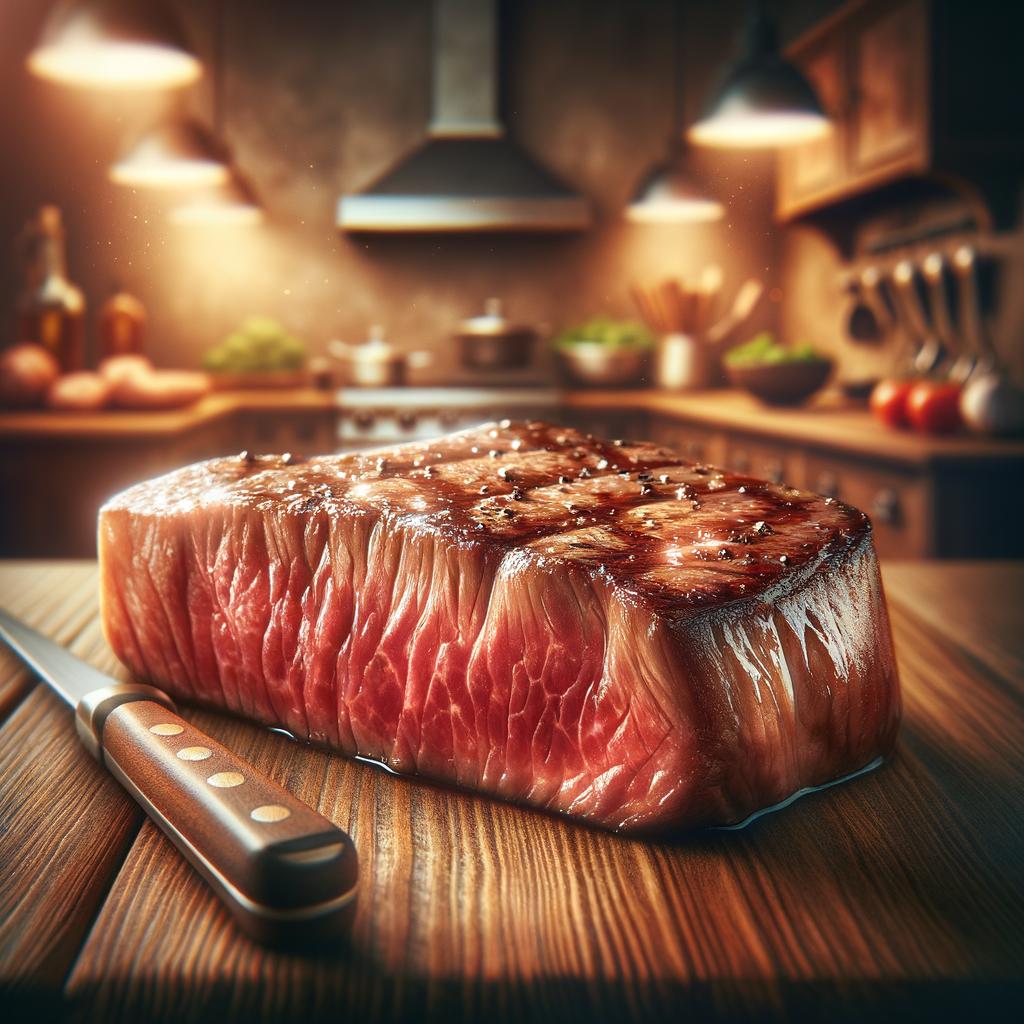Flat Iron Steak

Description Flat Iron Steak, also known as Butler's Steak in the UK or Oyster Blade Steak in Australia, is a delectable cut of beef that has won the hearts of many meat lovers. It has a uniform thickness and rectangular shape, resembling an old-fashioned metal flat iron, hence its name. The steak is characterized by its rich marbling, which gives it a beautifully tender texture and robust flavor. The meat is a deep, enticing red, and the marbling, streaks of fat woven into the muscle, melts during cooking, ensuring the steak stays juicy and flavorful. The flat iron steak is unique for its perfect balance of tenderness and flavor, often compared to more expensive cuts like the filet mignon or ribeye.
Primary Uses Flat Iron Steak is incredibly versatile and shines in a variety of culinary applications. It's often grilled or broiled to medium-rare perfection, developing a crispy, caramelized exterior that contrasts beautifully with the tender, juicy inside. It's a star in dishes from fajitas to steak salads, and it's equally impressive served on its own, perhaps with a pat of herb butter melting on top. Beyond the kitchen, it has no significant non-culinary uses but holds a special place in the heart of meat connoisseurs for its exceptional balance of flavor and tenderness.
History The flat iron steak has a relatively modern history. It was "discovered" during a research project by the University of Nebraska and the University of Florida in 2002. The project aimed to find ways to use underutilized cuts of beef. They found that the meat from the shoulder, or chuck, was incredibly tender and flavorful, but a tough sinew ran through the middle. The solution was to remove this sinew and cut the meat into two top blade steaks, now known as the flat iron steak. Since its introduction, the flat iron steak has quickly gained popularity for its affordability and delicious taste, making it a beloved choice for many home cooks and professional chefs alike.
Nutritional Information Flat Iron Steak is a nutrient-dense food. It's an excellent source of protein, essential for building and repairing tissues. It also provides significant amounts of zinc, iron, and vitamin B12, nutrients that are crucial for maintaining a healthy immune system, producing red blood cells, and supporting neurological function, respectively. Compared to other cuts of beef, flat iron steak holds its own, offering a similar nutritional profile but often at a lower price point. However, like other red meats, it's high in saturated fat, so it's best to enjoy it in moderation as part of a balanced diet. The joy of food is not only in the eating but also in the stories it tells and the nourishment it provides. Flat iron steak, with its unique history and nutritional bounty, certainly has a tale worth savoring.

